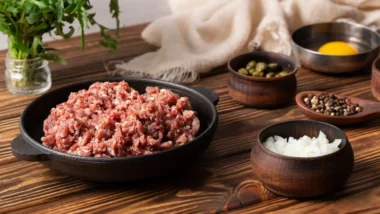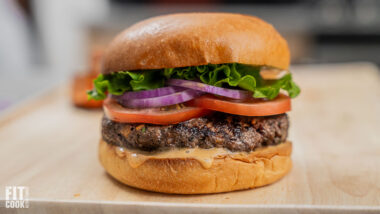Slow Cooked Pulled Lamb Meal Prep

Want to save this recipe?
I got you! Just enter your email address, and I'll forward it to your inbox! Plus, you'll receive a bonus of healthful, "must-try" recipes each week!
If you’ve skipped over buying lamb in the grocery store you may want to reconsider! Historically lamb was considered too pricey for the average diet (at least in the US), but thanks to increased domestic production, improved efficiency, market competition, and growing demand lamb has become more affordable to incorporate into diets.
The price – and just not knowing how to cook lamb – was one of the major reasons I always excluded it from my grocery cart. But not anymore – it has emerged as one of my favorite proteins!
What are the health benefits of lamb?
- Protein: Lamb is a rich source of high-quality protein, which is essential for muscle repair, growth, and overall body function.
- Nutrient-rich: Lamb is packed with various vitamins and minerals, including vitamin B12, zinc, selenium, iron, and niacin. These nutrients play vital roles in energy production, immune function, and metabolism.
- Iron: Lamb contains “heme iron,” which is more easily absorbed by the body compared to non-heme iron found in plant-based foods. Adequate iron is important for preventing anemia and maintaining healthy blood oxygen levels.
- Omega-3 Fatty Acids: though not as high as in fish, lamb contains omega-3 fatty acids, which have anti-inflammatory properties and are beneficial for heart health.
- Conjugated Linoleic Acid (CLA): Do you know those fat loss supplements with CLA sold in vitamin shops? Lamb has CLA, a type of fatty acid that has been linked to improved body composition and reduced risk of heart disease.
How much lamb in a diet is healthy?
As always, it depends on the individual.
The proper amount of daily lamb consumption can vary depending on dietary needs, preferences, and overall health goals.
Generally, it’s recommended to consume lamb (and any other protein) in moderation as part of a varied diet, alongside other protein sources such as poultry, fish, legumes, and plant-based proteins.
A typical serving size of cooked lamb is around 3-4 ounces (85g-113g) cooked, which provides about 20g -25g of protein.
Is Lamb healthier than beef?
Let’s see how they compare per 3.5 oz serving…
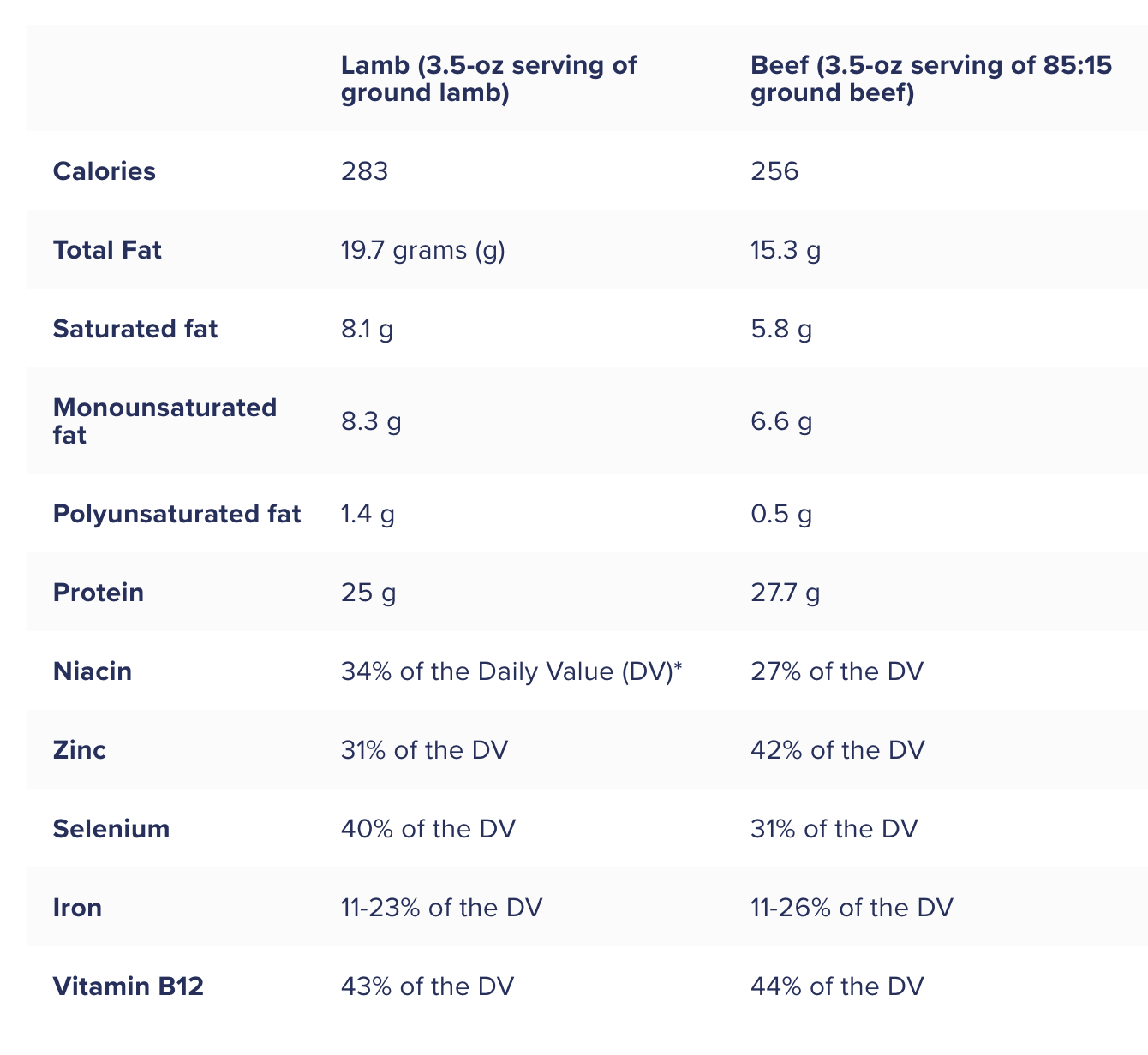
Above graphic from Nutrition Insider.
It really depends on what’s most important to you in your diet. While lamb may be slightly higher in calories and saturated fat, it has more omega-3 fatty acids and is richer in all of the essential amino acids.
The saturated fat content of lamb can vary depending on the cut and how it is prepared. In daily consumption, lamb tends to have a lower saturated fat content compared to beef since there is less marbleization in lamb meat and it is easy to trim visible fat.
For example, a 3oz (85g) serving of lamb leg, trimmed of visible fat, typically contains around 2.6 grams of saturated fat.
In contrast, a 3oz size of beef (such as a lean cut like sirloin or tenderloin), trimmed of visible fat, may contain around 2.9g -3.1g of saturated fat.
Again – it all comes down to the cut of meat, the cooking method, and any added fats or sauces.
Generally speaking, lean cuts of both lamb and beef can be part of a healthy diet when consumed in moderation. It’s also important to consider overall dietary patterns and choose a variety of protein sources to ensure a balanced intake of nutrients.
Variety matters.
Is Lamb Easy to Cook?
Yes! Very. And I would say it is easier to cook than beef – no really!
Lamb-leg is often considered easy to cook due to its relatively simple preparation and versatility. It can be roasted whole or cut into smaller pieces for various dishes such as stews, kebabs, grilled chops or even pulled to enjoy in sandwiches or with grains.
Lamb has a larger size also which makes it suitable for meal prep so you get multiple portions, or for a large family or get-together.
Individuals who need to limit their intake of red meat, including lamb, due to high cholesterol, heart disease, or gout should be careful in adding it to a weekly meal plan.
Can you overcook lamb?
Well, let’s just say it’s pretty darn hard! I once left the lamb roasting uncovered in the oven for an extra hour and it was crispy on the outside, juicy on the inside, and slid off the bone like butter.
You could shred the meat with a spoon it was so tender!
Slow-cooked or roasted lamb is often difficult to overcook due to several factors:
- Moisture: Lamb is naturally moist, which helps keep it tender and juicy during cooking. Slow cooking or roasting allows the meat to cook gradually, retaining its moisture and preventing it from drying out even if cooked for an extended period.
- Connective Tissue Breakdown: Lamb contains connective tissues, such as collagen, which can be tough if not properly cooked. Slow cooking or roasting at low temperatures breaks down these connective tissues over time, resulting in tender and flavorful meat.This process of collagen breakdown, known as collagen hydrolysis, occurs more efficiently at lower temperatures, making it difficult to overcook the lamb.
- Fat Content: Lamb meat typically has a moderate amount of fat, which contributes to its flavor and juiciness. During slow cooking or roasting, the fat slowly renders, enhancing moisture and tenderness.
- Temperature Control: cooking lamb at low temperatures over an extended period (slow) reduces the risk of overheating and overcooking the meat, compared to faster cooking methods where the temperature can fluctuate rapidly.
How to make pulled lamb
Set the oven to 400F/204C.
Remove the lamb from the packaging and remove any plastic twine helping it together. Trim any large visible pieces of fat.
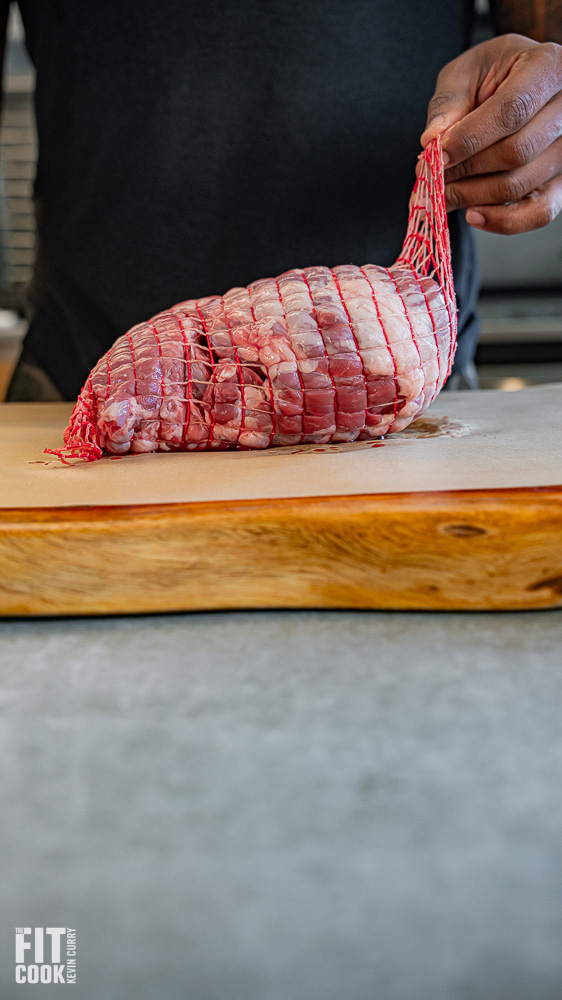
Use twine to tie the lamb back together so it doesn’t fall apart too quickly when roasting.

Season the outside with sea salt and pepper.

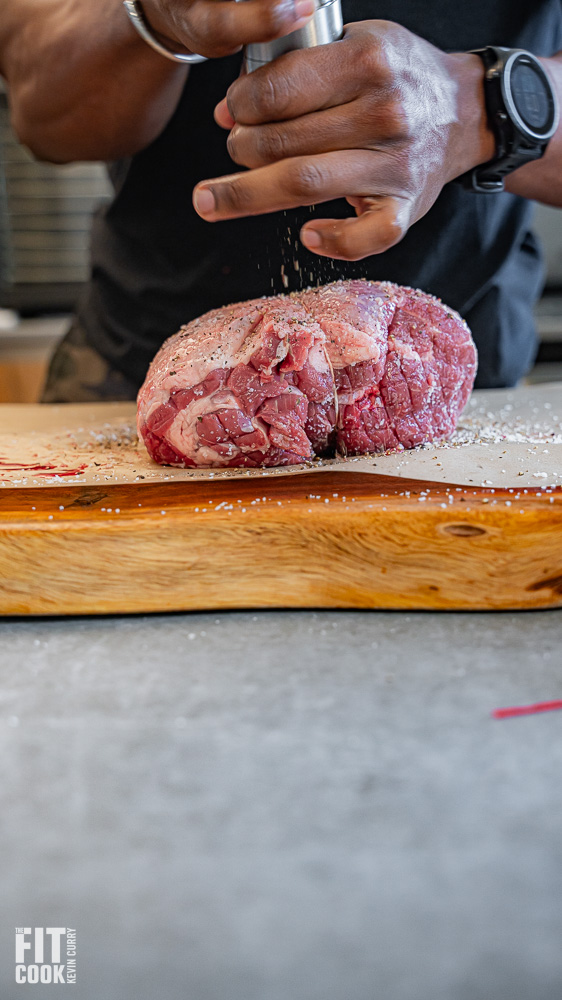
Set a dutch oven or braiser on medium heat and spray with a little oil. Since lamb has visible fat, the fat will render in the pan so there’s no need to add more oil in my opinion.
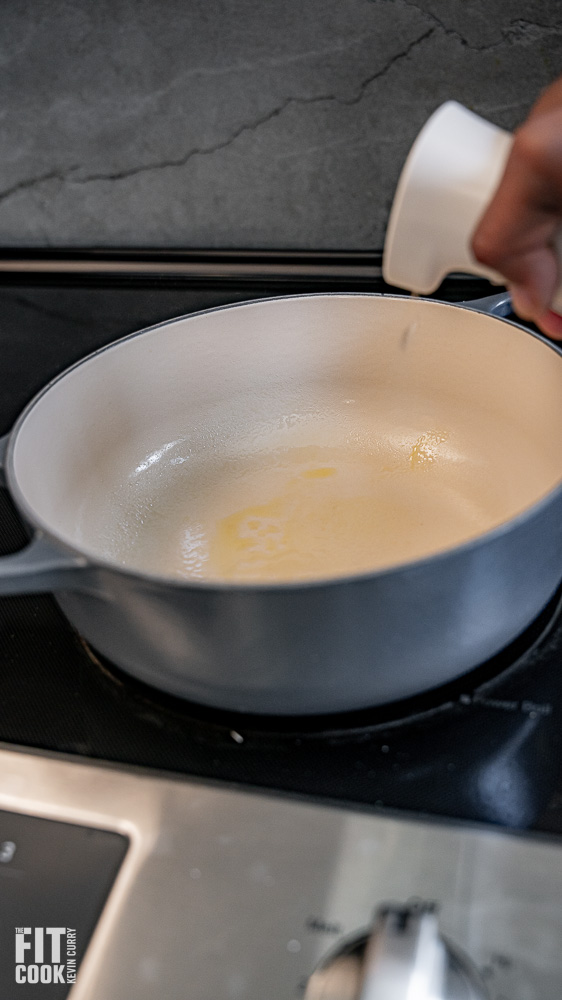
Add the lamb and sear on all sides. Then remove from the pan.
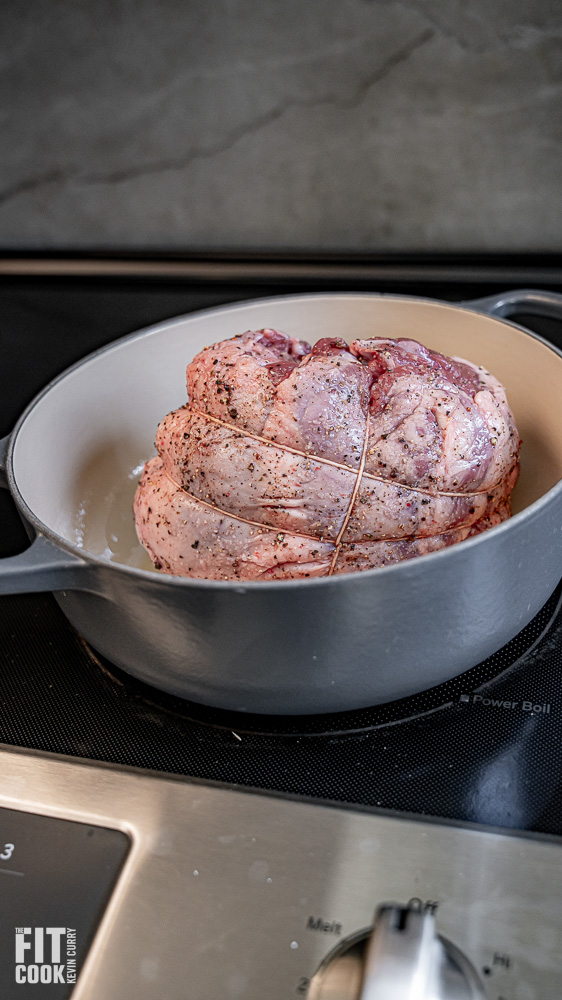
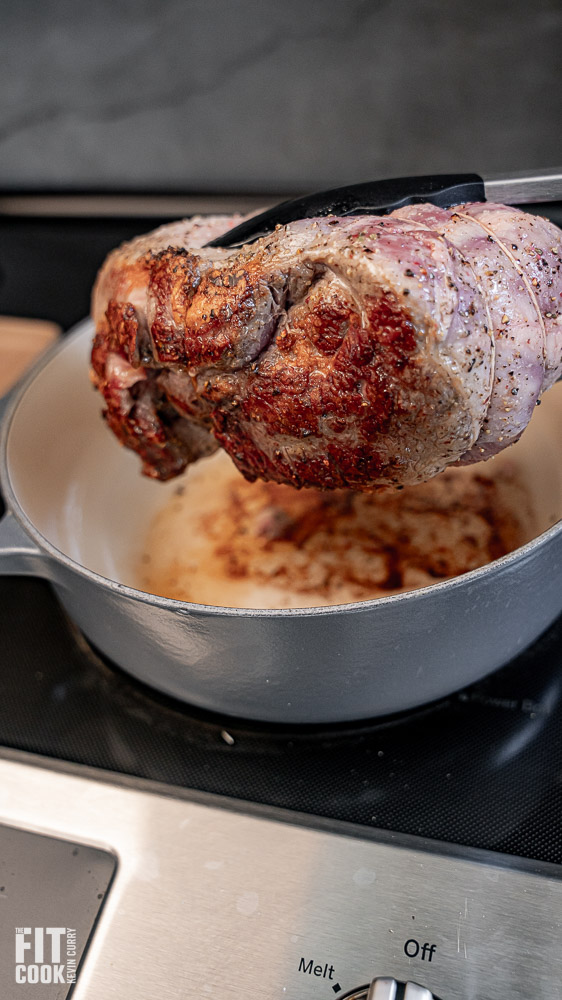
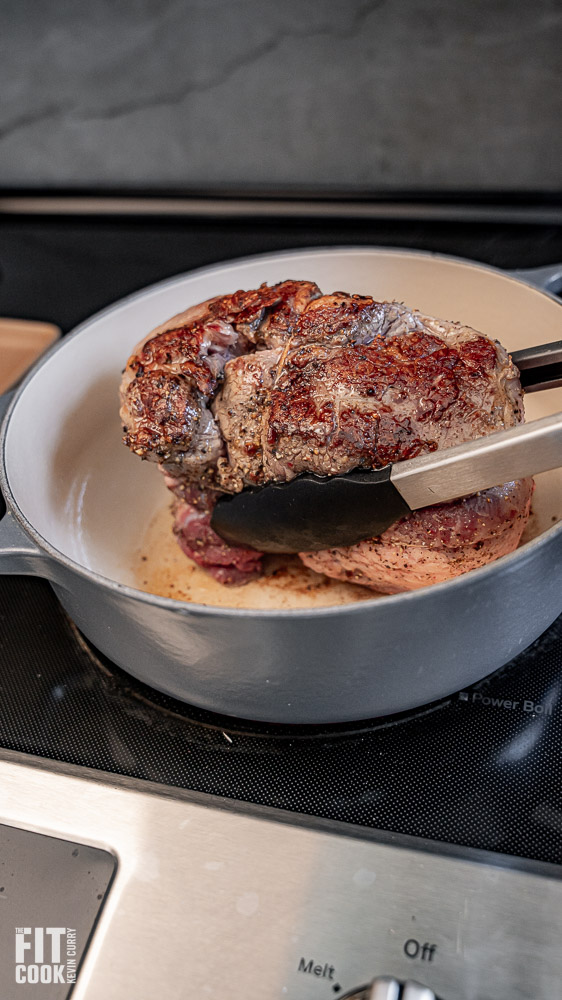
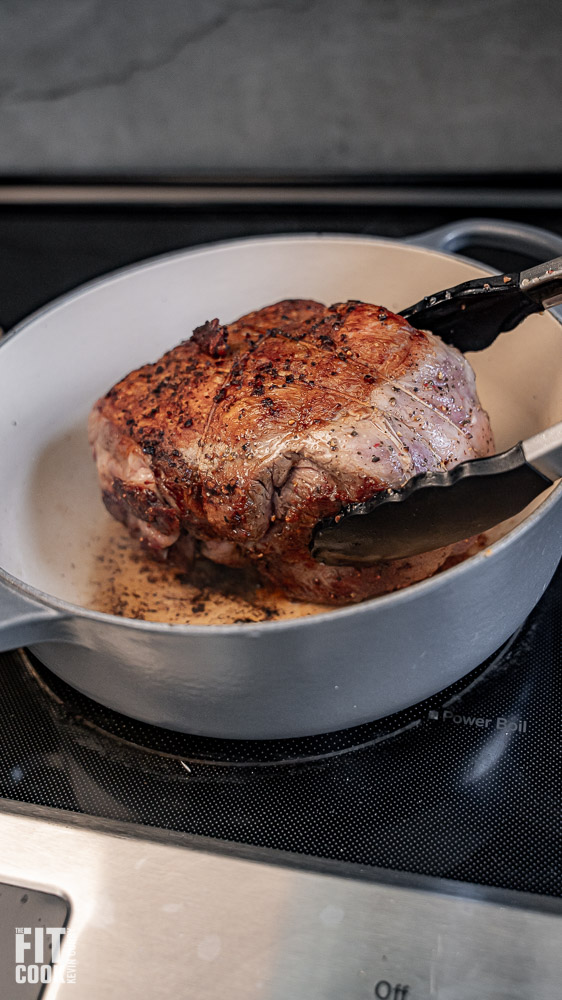
Add onions and sauté until brown and translucent, then add garlic.
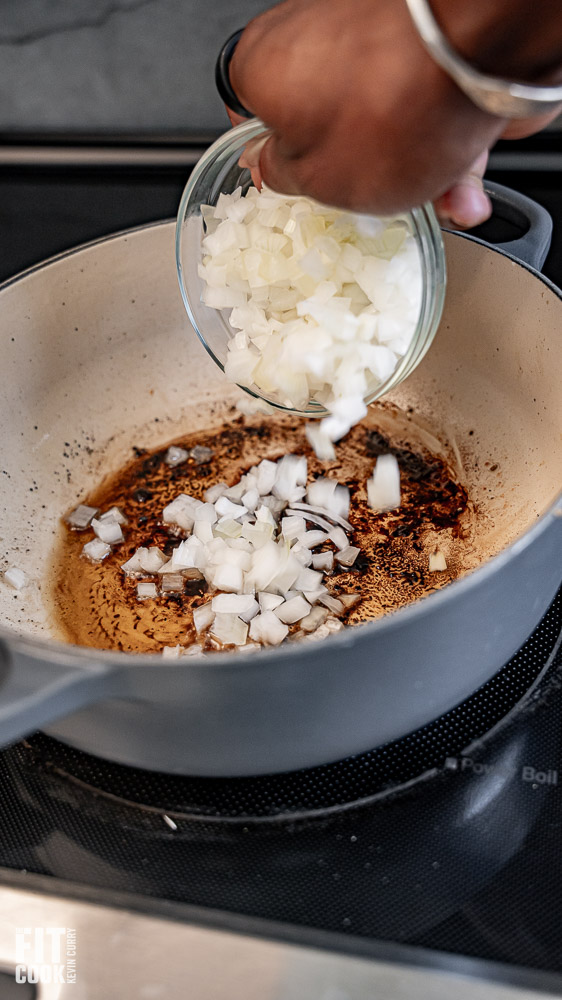
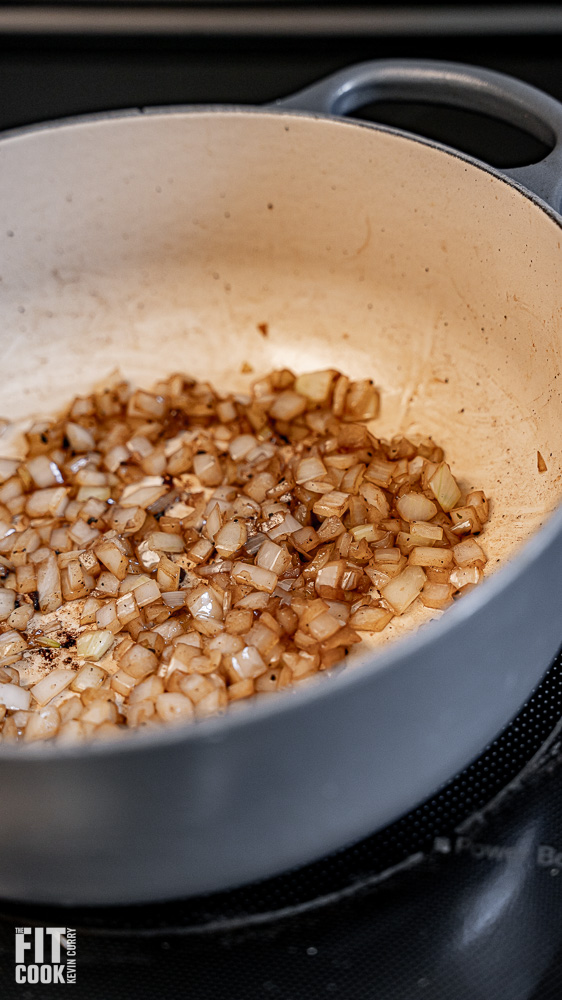
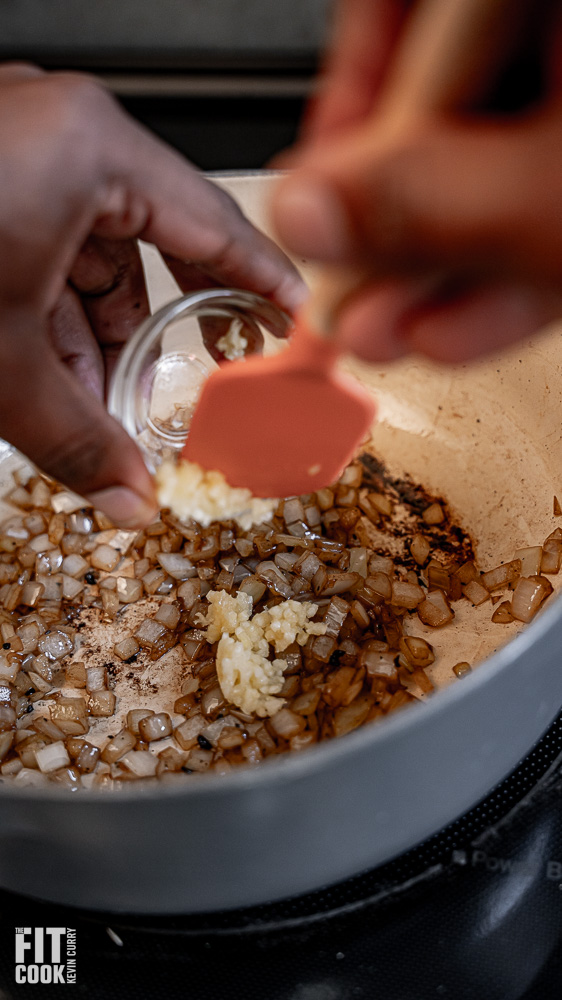
Bloom your choice of spices in the oil with onion and garlic. One spice I almost always include when cooking lamb is (smoked) paprika.

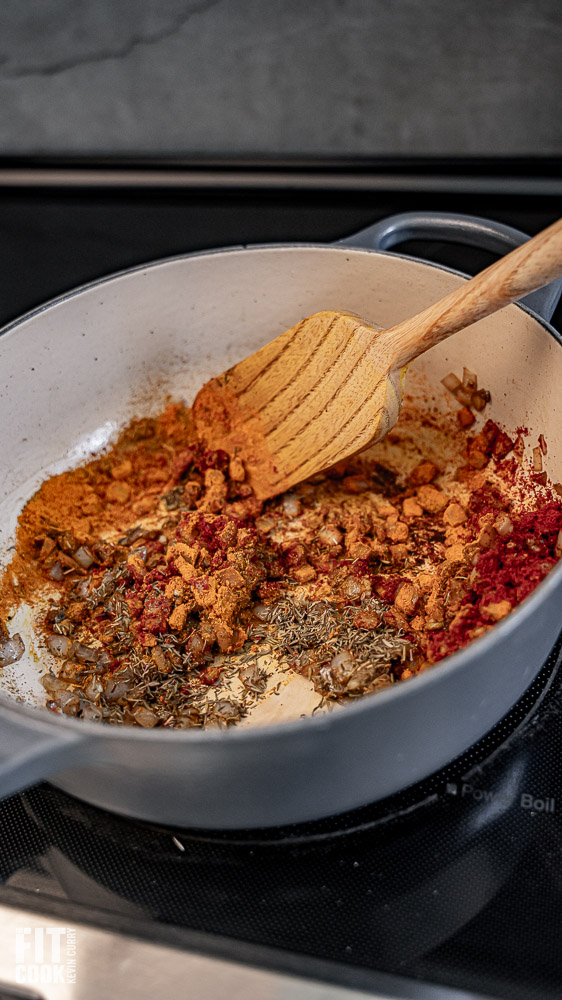
Reduce with red wine or red wine vinegar to about half, or until a paste begins to form.
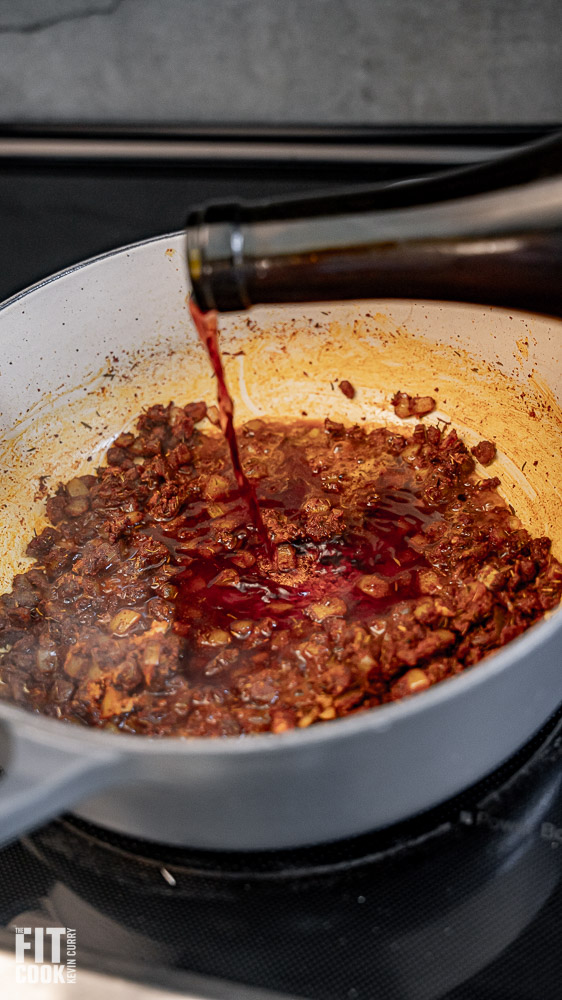
Add low-sodium beef broth.
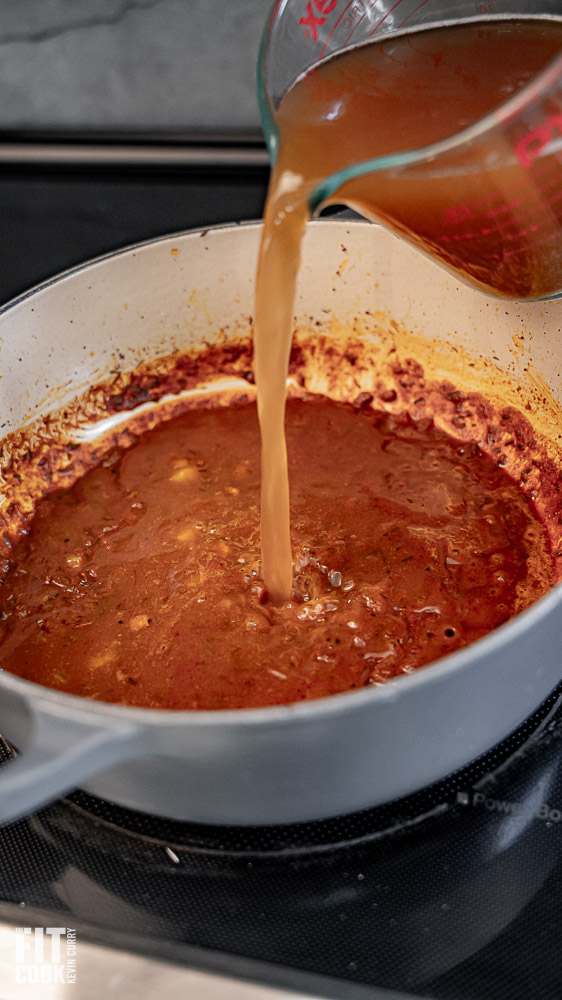
Add tomato paste and a cinnamon stick (a staple in the majority of my lamb dishes).
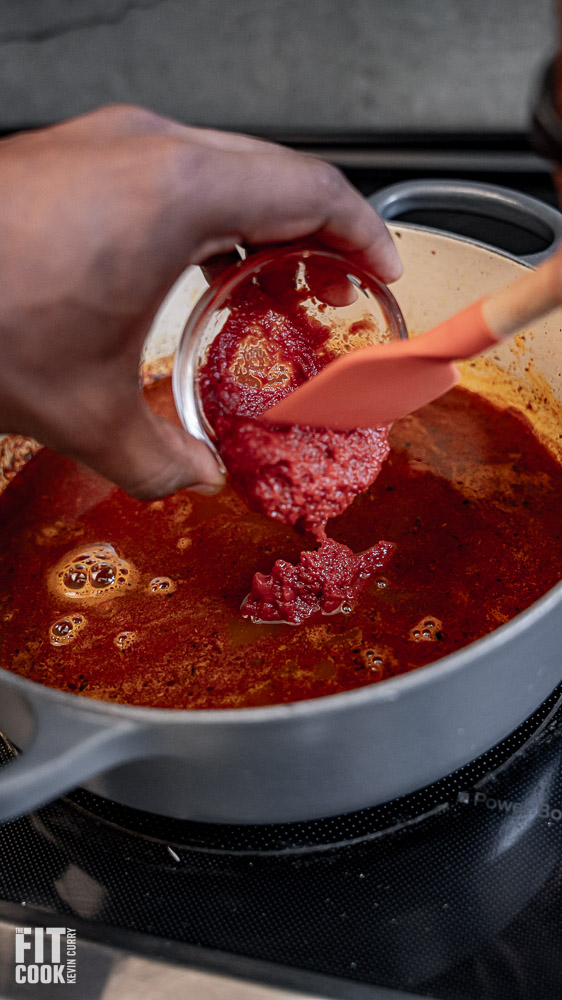

Remove from the heat and add the lamb back to the pot.
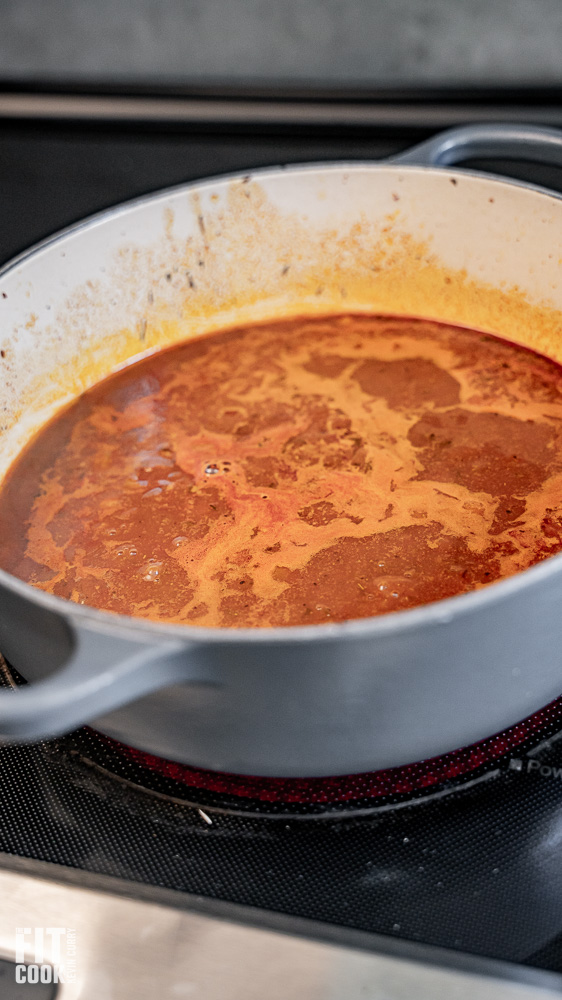
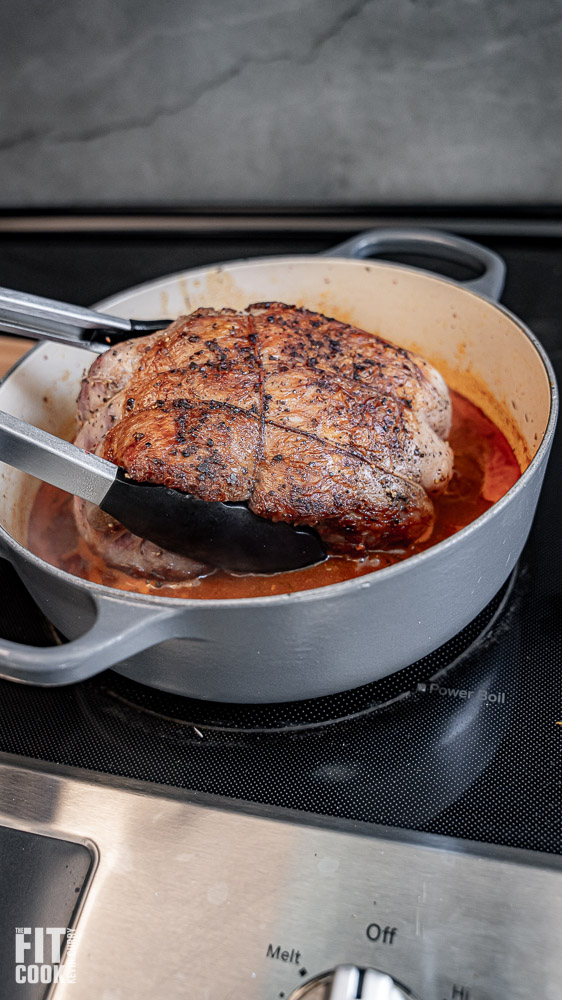
Spoon a few tablespoons over the lamb. Then cover and place in the oven for 1.5 – 2 hours.
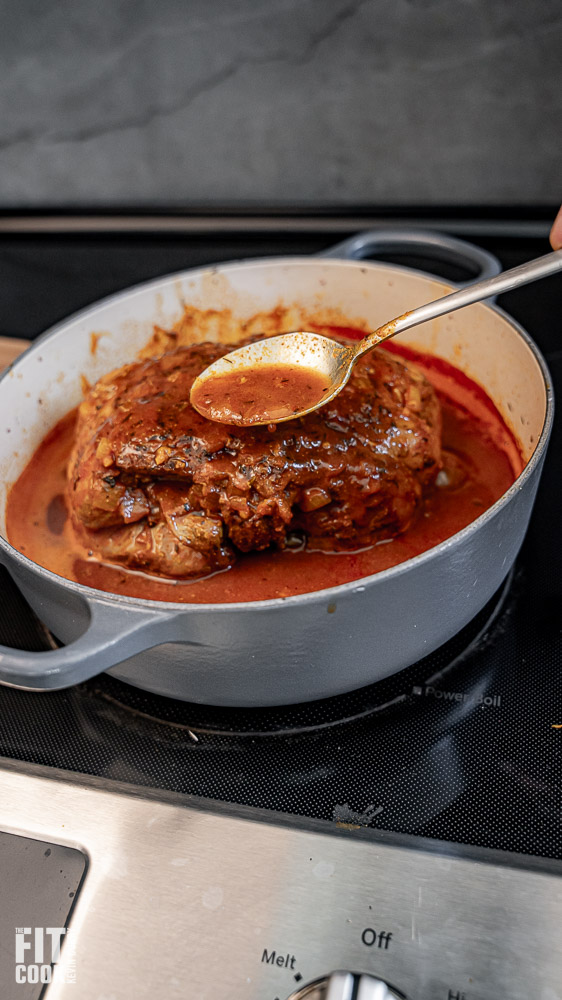
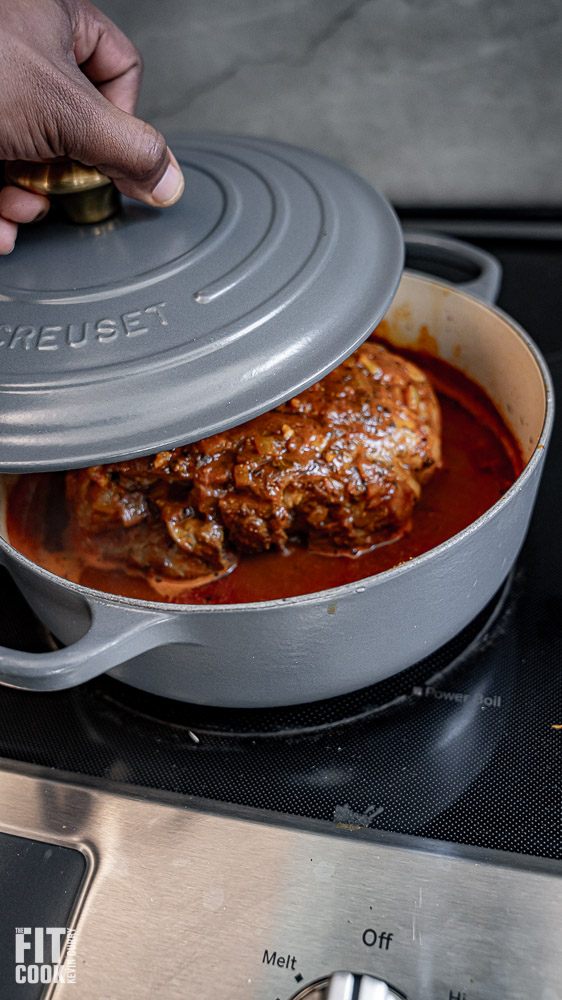
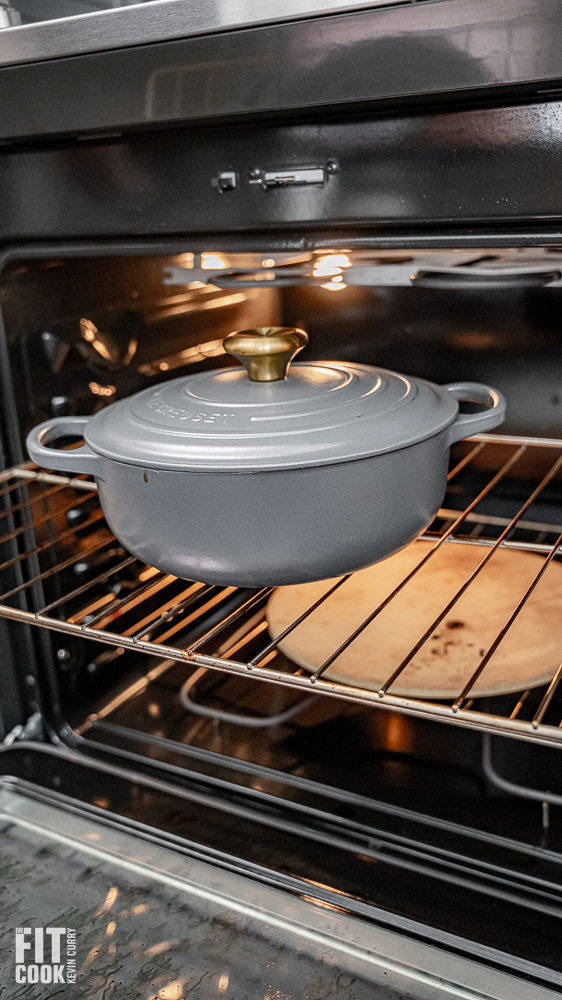
Remove the lid and spoon more of the sauce over the lamb. Roast uncovered for an additional 45 minutes – 1 hour.
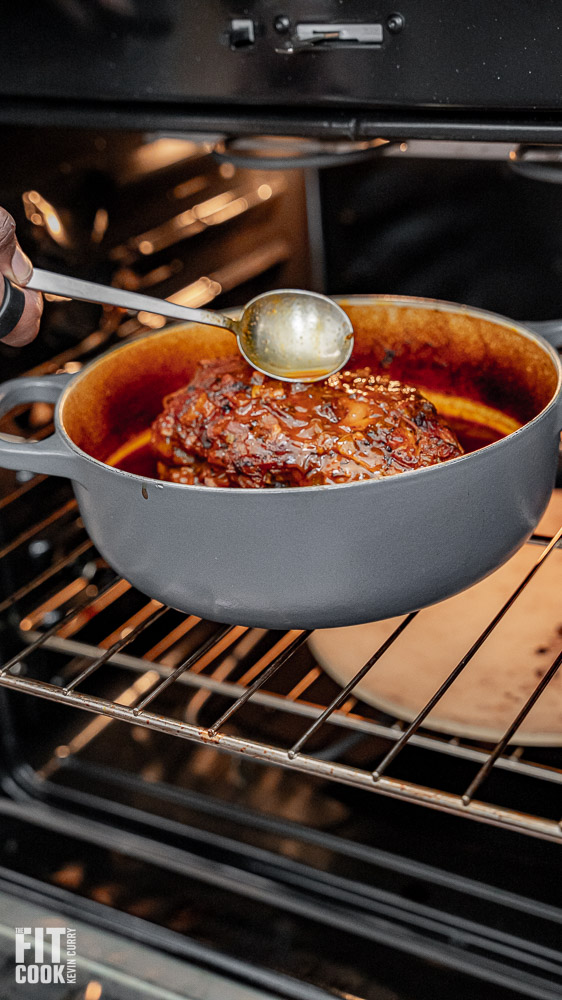
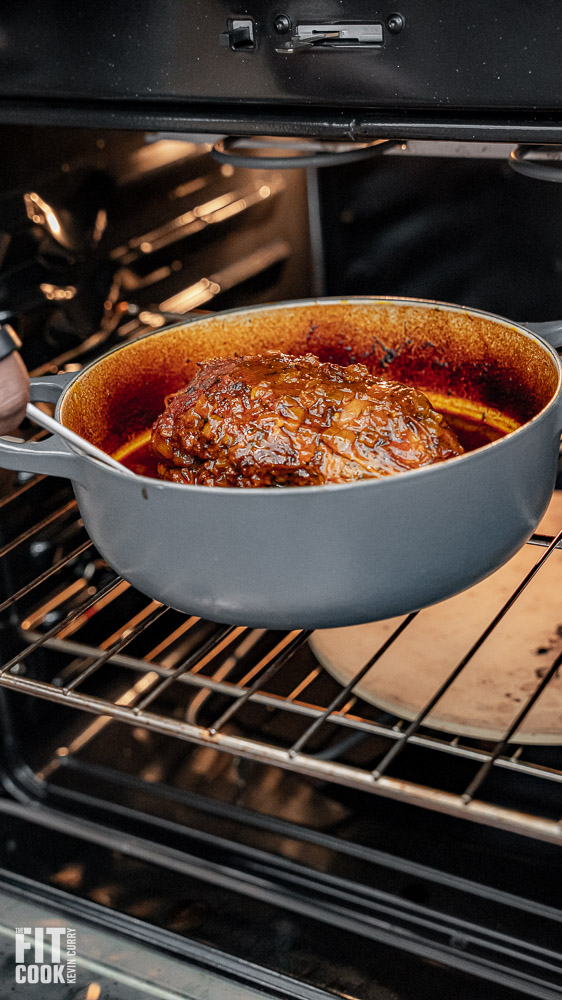
After the cooking cycle natural gravy should have formed. Use a paper towel and lightly pat the top of the gravy to remove excess grease.
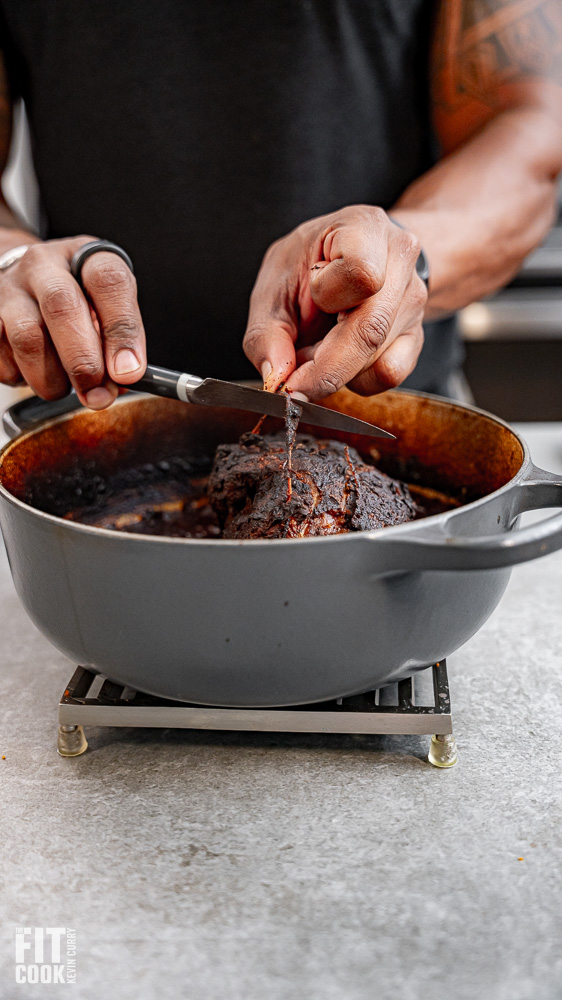

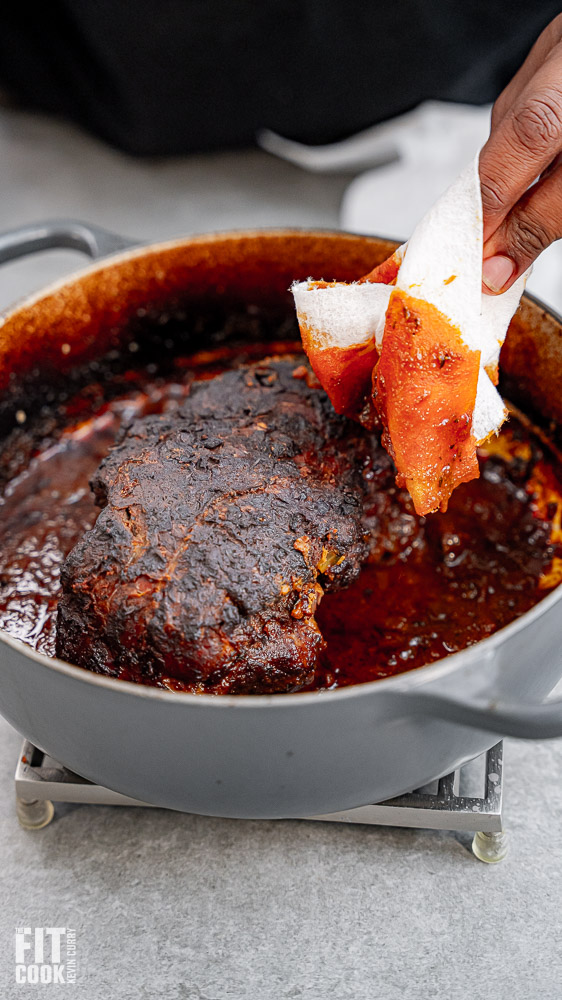
Shred the lamb and incorporate into the gravy.
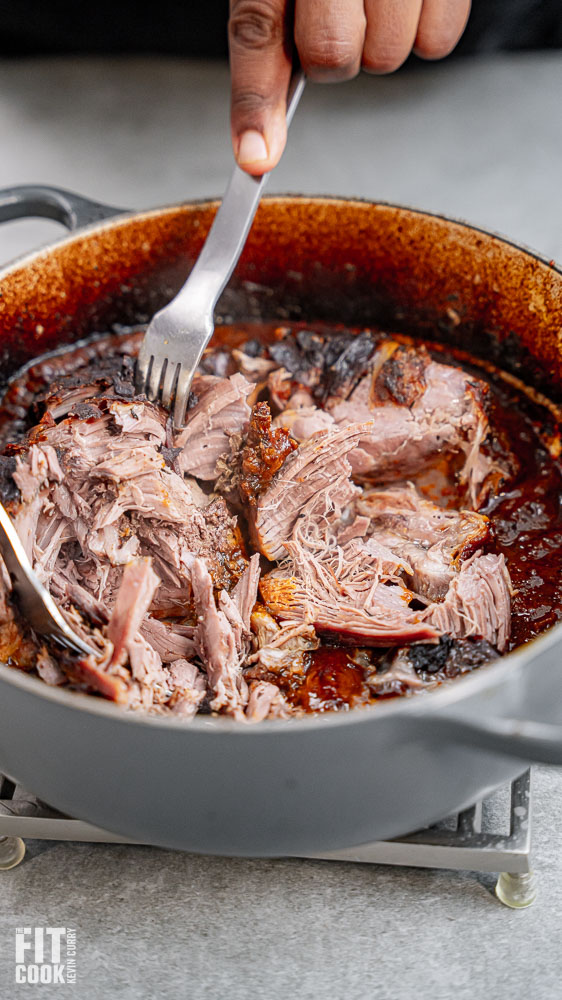
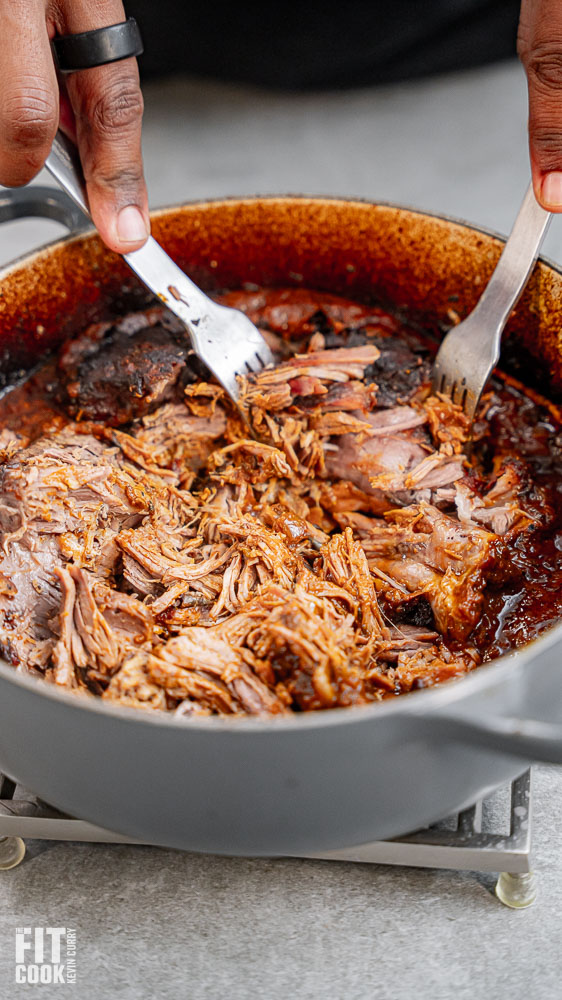
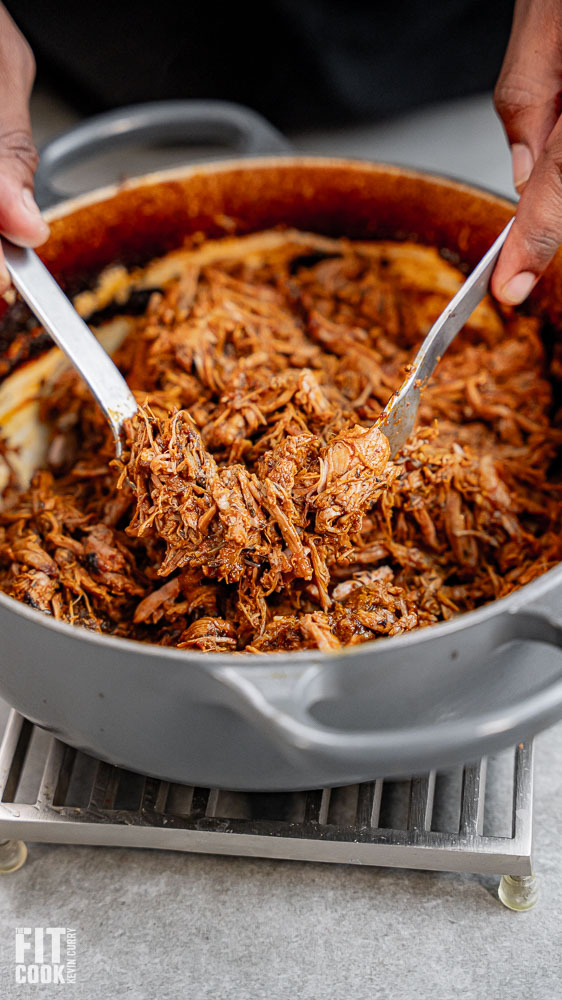
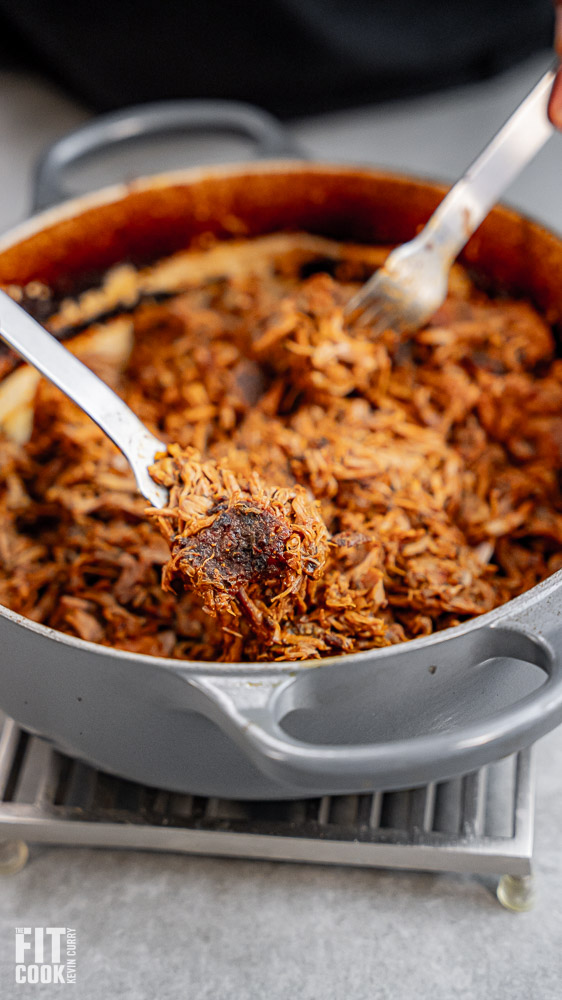
Add your choice of freshly chopped herbs like parsley or tarragon.
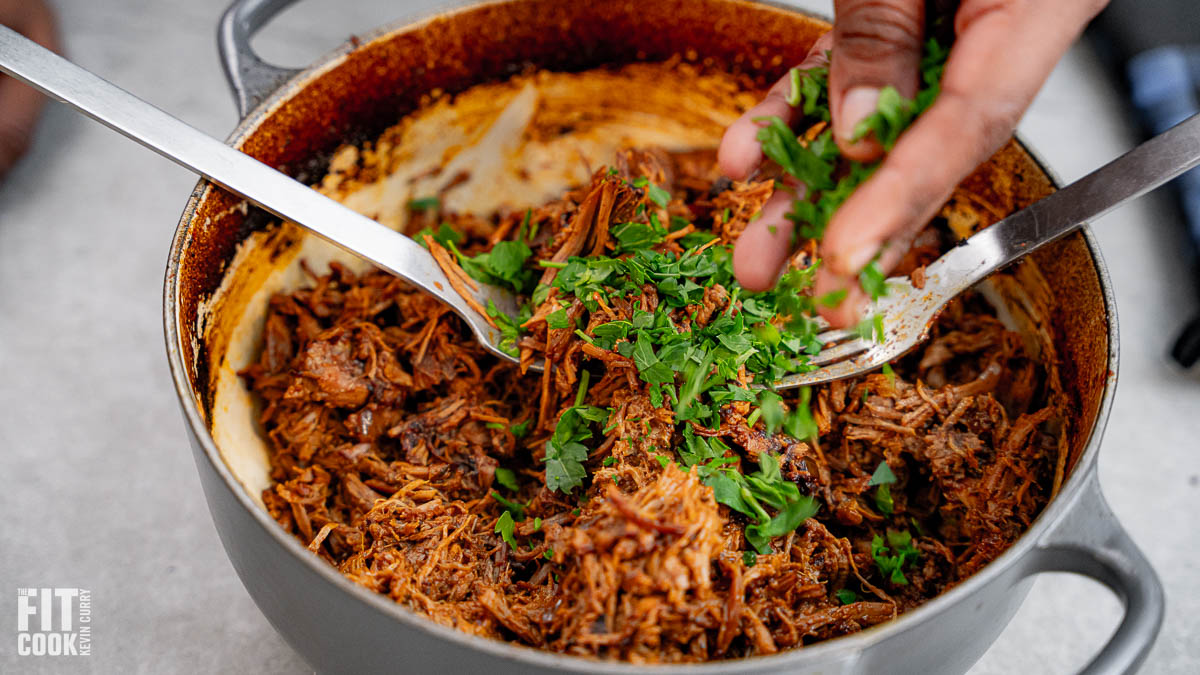
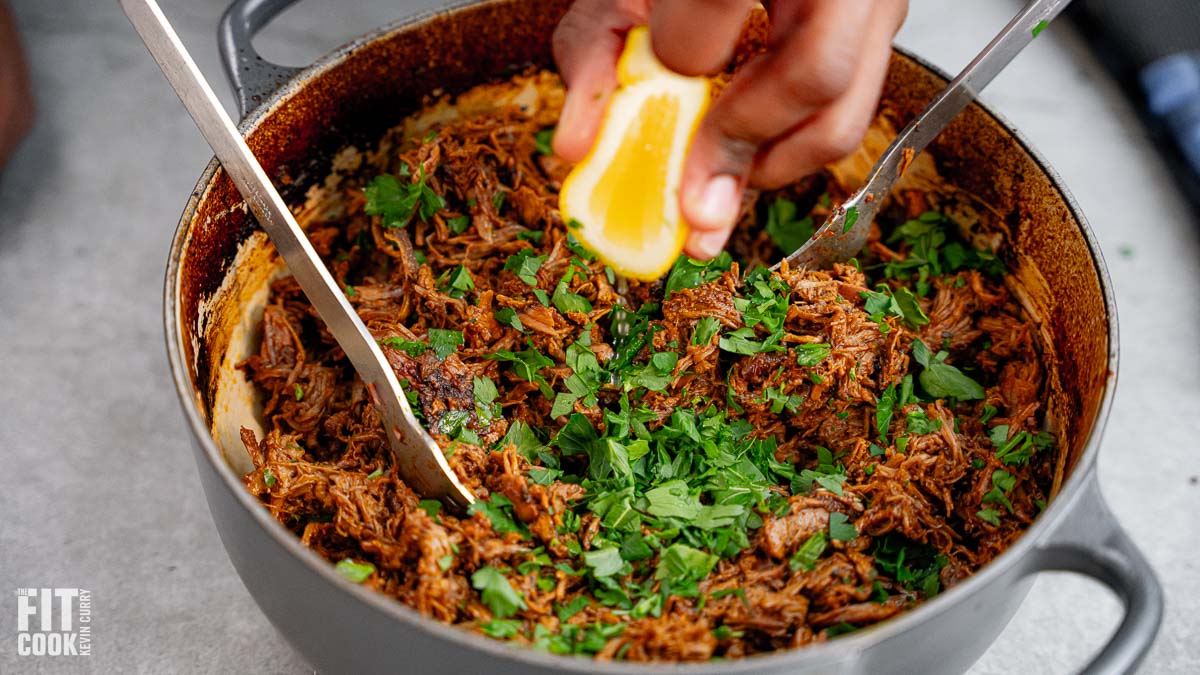
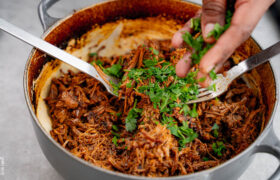

Slow Cooked Pulled Lamb Meal Prep
Ingredients
- 2.5lb lamb leg, boneless and fat trimmed
- 1 teaspoon mineral salt
- black pepper to taste
- 1/2 medium onion, chopped
- 3 garlic cloves, minced
- 1 tablespoon smoked paprika
- 1 tsp turmeric
- 1.5 tsp cumin
-
1 tsp dried thyme
oregano, rosemary
-
5oz red wine
red wine vinegar
- 1 cinnamon stick
- 2 cups low sodium beef broth
- 3 tablespoons tomato paste
- fresh parsley
- juice from 1/2 lemon or to taste
Steps
Step 1
Set oven to 400F/204C.
Step 2
Pat the lamb leg dry with a paper towel.
Trim any large visible pieces of fat.
Step 3
Use twine to tie the lamb leg together so it doesn’t fall apart when roasting. Season it all over with sea salt & pepper.
Step 4
Set a Dutch oven or braiser on medium heat and spray with a little oil.
Note: start with a lower temperature to better render the fat and then gradually increase to sear.
Sear the lamb on all sides, about 3 m-4 minutes per side. Remove the lamb from the pan using tongs.
Step 5
Sauté onions until brown and translucent, then add garlic, about 5 minutes.
Continue to monitor the pot to ensure the temperature is not too hot. If so, simply remove the pot from the heat to cool.
Step 6
Add the spices and bloom them in the oil, onion and garlic mix.
Step 7
Add the red wine and reduce about half the liquid, or until a thin paste/gravy begins to form, about 3 – 5 minutes.
Step 8
Pour in the low-sodium beef broth and bring to a very gentle simmer.
Add the cinnamon stick and stir.
Step 9
Add the lamb back to the pot and spoon a few tablespoons of the gravy over the lamb. Cover and roast for about 2 hours.
I like to check on it every 30 minutes to spoon more gravy over it and then cover and continue cooking.
Step 10
Remove the lid, spoon more of the gravy on top, then roast uncovered for 45 minutes to 1 hour.
Step 11
Once cooking has been completed, there should be a natural gravy in the pan but it may have grease on top.
Use a paper towel and lightly touch the top of the gravy to remove any excess grease.
Step 12
Shred the lamb with forks and fold the meat into the gravy.
Season to taste with sea salt and pepper.
Step 13
Garnish and enjoy immediately while hot.
Store in the fridge for 5 – 7 days in an airtight container, or in the freezer for about 3 months.
Note: since lamb leg makes a lot, I recommend freezing anything you will not eat within 3 days to maximize freshness.
Remember to defrost in the fridge the night before you wish to enjoy it.
Slow Cooked Pulled Lamb Meal Prep
Kevin Curry
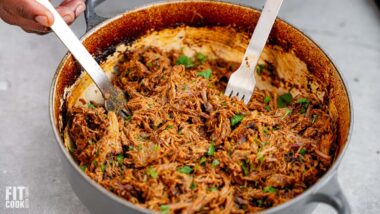
- 2.5lb lamb leg, boneless and fat trimmed
- 1 teaspoon mineral salt
- black pepper to taste
- 1/2 medium onion, chopped
- 3 garlic cloves, minced
- 1 tablespoon smoked paprika
- 1 tsp turmeric
- 1.5 tsp cumin
-
1 tsp dried thyme
oregano, rosemary
-
5oz red wine
red wine vinegar
- 1 cinnamon stick
- 2 cups low sodium beef broth
- 3 tablespoons tomato paste
- fresh parsley
- juice from 1/2 lemon or to taste
-
Set oven to 400F/204C.
-
Pat the lamb leg dry with a paper towel.
Trim any large visible pieces of fat.
-
Use twine to tie the lamb leg together so it doesn’t fall apart when roasting. Season it all over with sea salt & pepper.
-
Set a Dutch oven or braiser on medium heat and spray with a little oil.
Note: start with a lower temperature to better render the fat and then gradually increase to sear.
Sear the lamb on all sides, about 3 m-4 minutes per side. Remove the lamb from the pan using tongs.
-
Sauté onions until brown and translucent, then add garlic, about 5 minutes.
Continue to monitor the pot to ensure the temperature is not too hot. If so, simply remove the pot from the heat to cool.
-
Add the spices and bloom them in the oil, onion and garlic mix.
-
Add the red wine and reduce about half the liquid, or until a thin paste/gravy begins to form, about 3 – 5 minutes.
-
Pour in the low-sodium beef broth and bring to a very gentle simmer.
Add the cinnamon stick and stir.
-
Add the lamb back to the pot and spoon a few tablespoons of the gravy over the lamb. Cover and roast for about 2 hours.
I like to check on it every 30 minutes to spoon more gravy over it and then cover and continue cooking.
-
Remove the lid, spoon more of the gravy on top, then roast uncovered for 45 minutes to 1 hour.
-
Once cooking has been completed, there should be a natural gravy in the pan but it may have grease on top.
Use a paper towel and lightly touch the top of the gravy to remove any excess grease.
-
Shred the lamb with forks and fold the meat into the gravy.
Season to taste with sea salt and pepper.
-
Garnish and enjoy immediately while hot.
Store in the fridge for 5 – 7 days in an airtight container, or in the freezer for about 3 months.
Note: since lamb leg makes a lot, I recommend freezing anything you will not eat within 3 days to maximize freshness.
Remember to defrost in the fridge the night before you wish to enjoy it.
Nutrition per serving
Popular Content
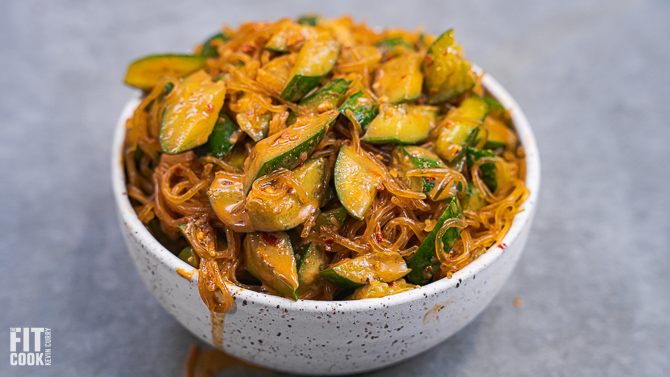
Low Carb Peanut Kelp Noodle Salad
Let me introduce you to one of my favorite low-carb yet filling meal prep recipes...
April 25, 2024
ABOUT THE AUTHOR
Hey, I'm Kevin
My name is Kevin. My life changed when I realized that healthy living is a lifelong journey, mainly won by having a well-balanced diet and maintaining an active lifestyle.
By experimenting in the kitchen and sharing my meals on Tumblr, I learned healthy eating is not boring! By making a few adjustments to my favorite foods, I could design a diet that could help me achieve my wellness goals while satisfying my desire for BANGIN food! 😅 Now I try to help people around the world realize that same level of freedom in eating regardless of budget. Welcome, let's #DemocratizeWellness together!
